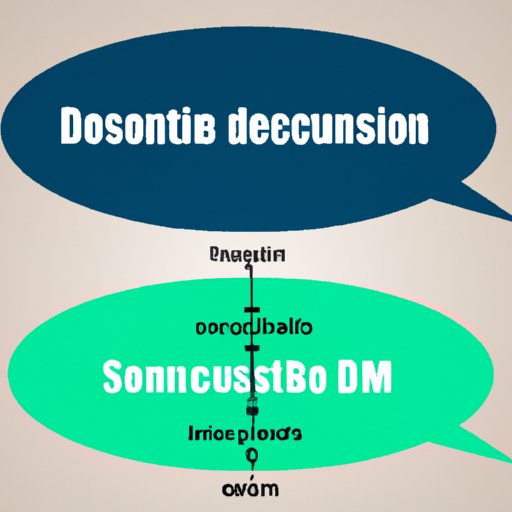
Introduction
If you’re a website owner, you’ve probably heard of subdomains. But what exactly are they? Subdomains are extensions of the main domain that you can use to organize your website’s content. For example, if your website is www.mywebsite.com, a subdomain could be blog.mywebsite.com or shop.mywebsite.com.
Many website owners use subdomains to distinguish different parts of their website, such as blogs, e-commerce stores, or forums. They also help with SEO and make it easier for visitors to navigate your site. However, there’s also a lot of confusion surrounding subdomains and whether or not they’re free. In this article, we’ll explore the pros and cons of using subdomains and their financial implications.
Maximizing Your Website’s Potential: The Lowdown on Subdomains
Before we get into the financial implications of using subdomains, let’s first discuss the differences between subdomains and subdirectories.
A subdirectory is an extension of the main domain that comes after the slash (/) in the URL. For example, www.mywebsite.com/blog would be a subdirectory of the main domain. Subdirectories are great for organizing content, but they don’t have as much SEO value as subdomains.
Subdomains, on the other hand, are treated as separate entities by search engines and can have their own unique SEO value. They also make it easier to track analytics and separate different parts of your website. However, they can be more complicated to set up and manage than subdirectories.
When it comes to the pros and cons of using subdomains, there are a few things to consider.
Pros
– SEO value: As mentioned earlier, subdomains can have their own unique SEO value and can help with site organization.
– Analytics tracking: Subdomains make it easier to track and analyze different parts of your website and identify areas of improvement.
– Design flexibility: Subdomains allow for greater design flexibility, allowing you to customize different parts of your website.
Cons
– Cost: Subdomains can come with additional costs for hosting and maintenance.
– Complexity: Setting up and managing subdomains can be more complicated than subdirectories, especially if you’re not familiar with website administration.
– Confusion for visitors: Depending on how you organize your subdomains, visitors may become confused or have difficulty finding the content they’re looking for.
Setting Up Your Website: How to Get the Most Bang for Your Buck
If you’re a new website owner, there are a few things you can do to optimize your site and get the most out of your investment.
First, make sure your website is mobile-friendly and easy to navigate. This will improve user experience and keep visitors engaged.
Next, conduct keyword research and optimize your content for search engines. This will boost your SEO and help you climb search engine rankings.
Finally, consider using subdomains or subdirectories to organize your content and make it easier for visitors to find what they’re looking for. But are subdomains really free?
Subdomains: Free, But Are They Worth Your Time?
The great news is that subdomains are typically free to set up. However, they do come with additional costs for hosting and maintenance.
When deciding whether or not to use subdomains, it’s important to think about your website’s goals and the user experience you want to create. Subdomains can be a powerful tool for SEO and site organization, but they come with an added layer of complexity.
If you’re set on using subdomains, it’s important to weigh the advantages and disadvantages of each option. Consider factors such as cost, design flexibility, and analytics tracking before making a decision.
Free Subdomains: A Cost-Saving Solution for Your Business?
For business owners looking to keep costs low, free subdomains can be a great option. There are a few hosting providers out there that offer free subdomains, and some website builders even include them in their plans.
However, it’s important to do your research and make sure these options meet your website’s needs. Free subdomains may come with limitations or reduced functionality, and you may have to sacrifice design flexibility or analytics tracking.
The Best of Both Worlds: Combining Subdomains and Subdirectories for Maximum Impact
If you’re torn between subdomains and subdirectories, why not use both? Many websites use a combination of subdomains and subdirectories to maximize SEO and site organization.
For example, you could have a subdomain for your blog (blog.mywebsite.com) and use subdirectories for different categories within the blog (blog.mywebsite.com/category1). This approach allows for greater design flexibility and analytics tracking without sacrificing SEO value.
Conclusion
In conclusion, subdomains can be a powerful tool for website owners looking to improve SEO and organization. While they may come with additional costs and complexity, they offer greater design flexibility and analytics tracking.
For business owners looking to keep costs low, there are free subdomain options out there. However, it’s important to weigh the advantages and disadvantages and decide whether or not it’s worth the investment for your website’s goals and user experience.





